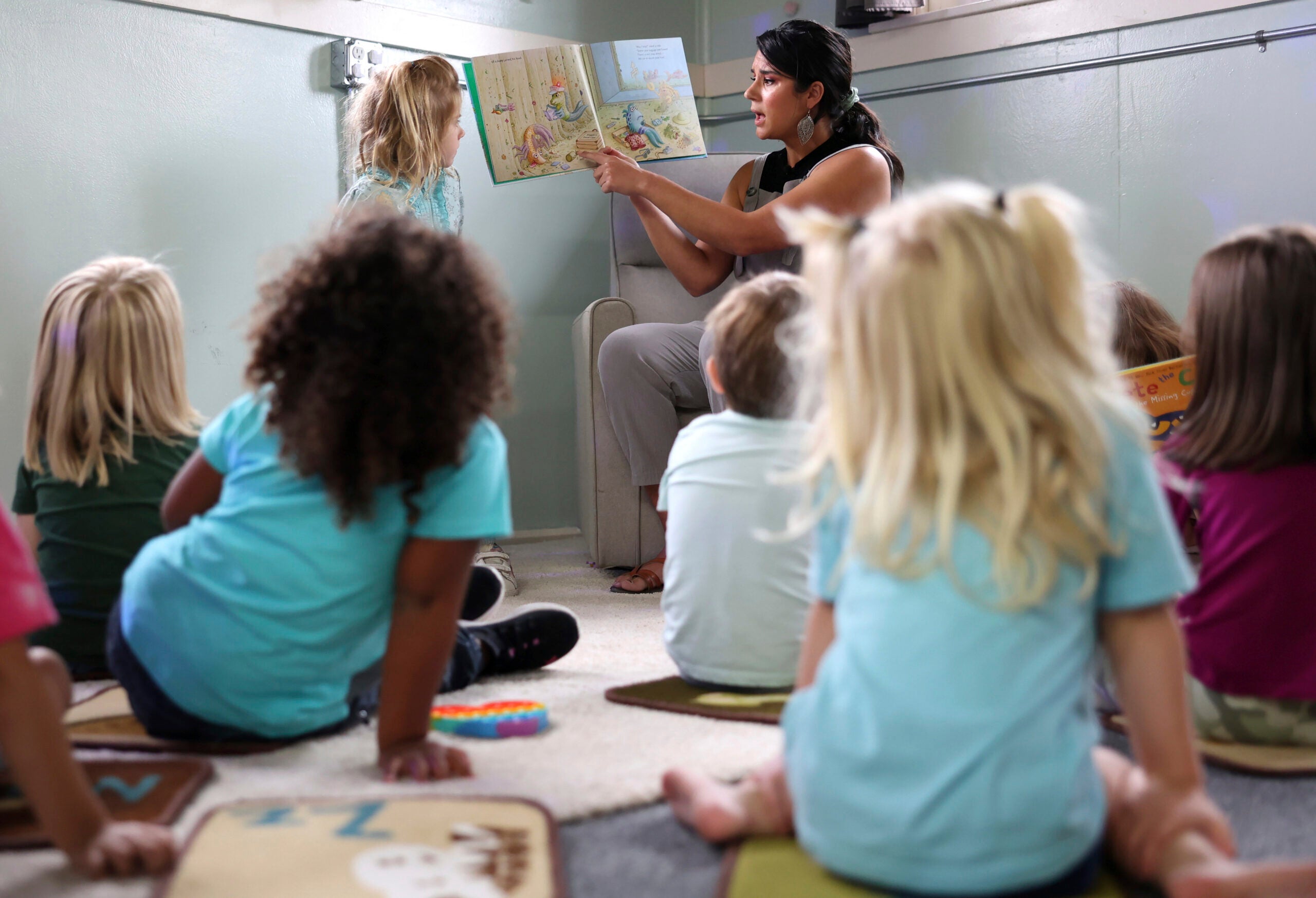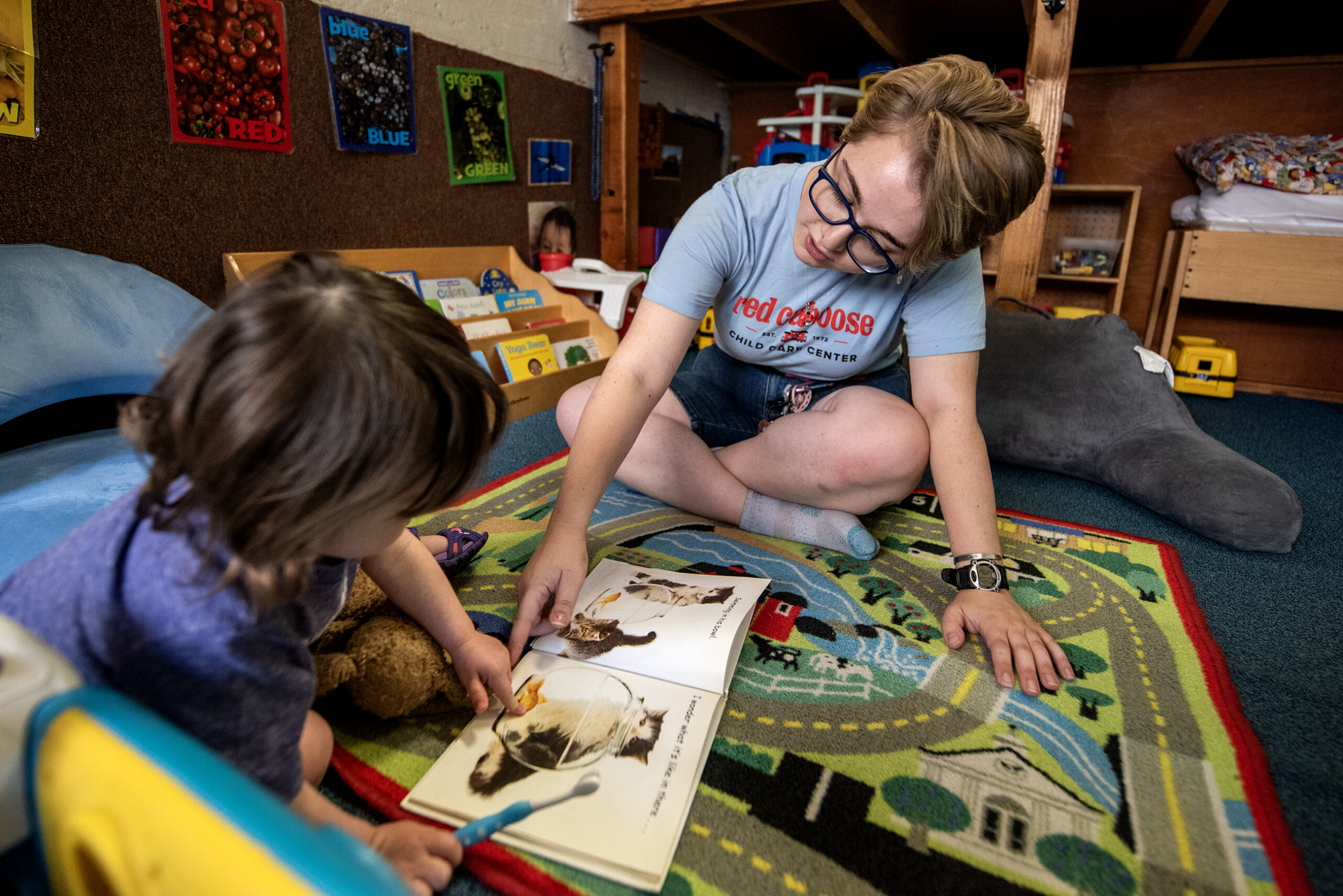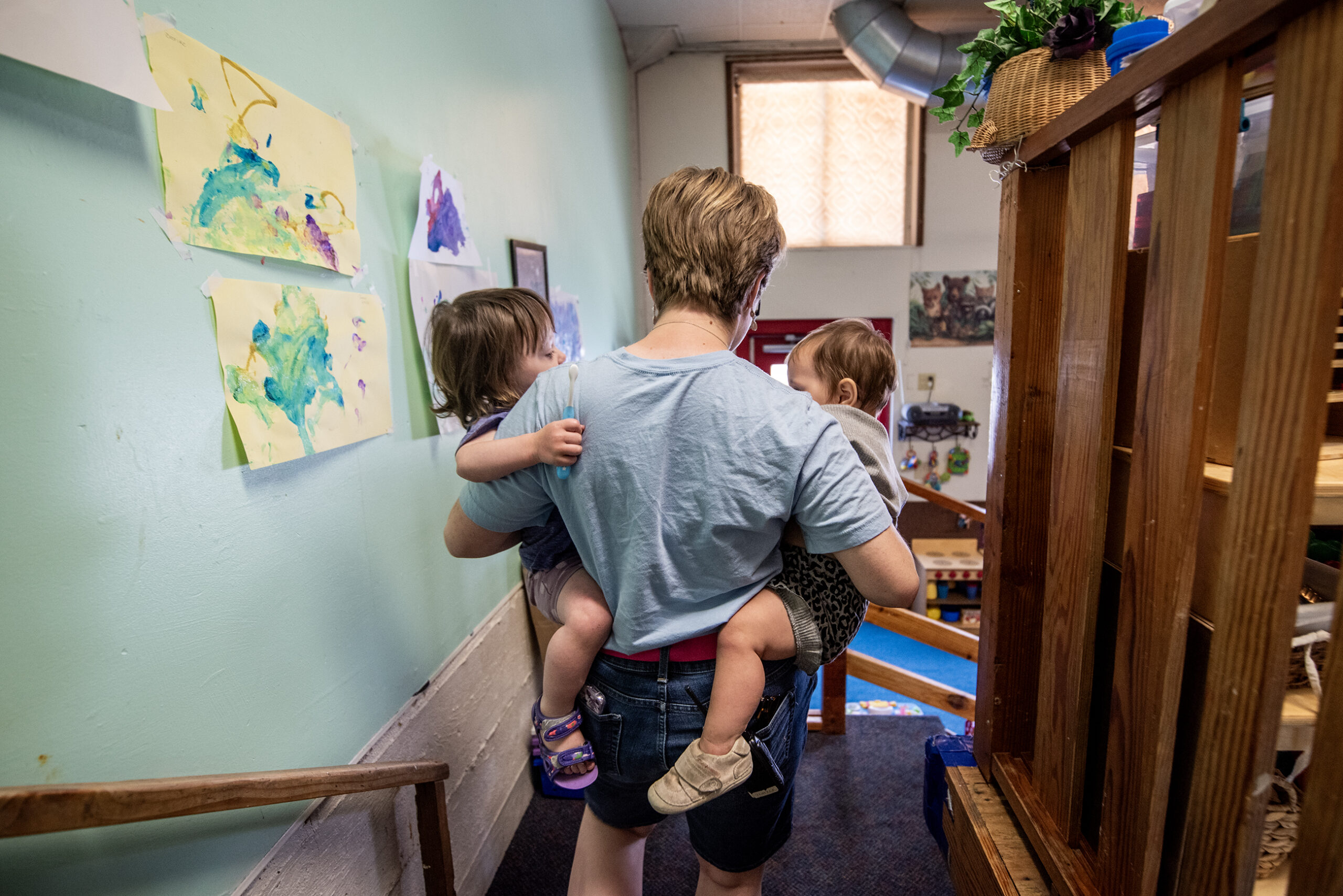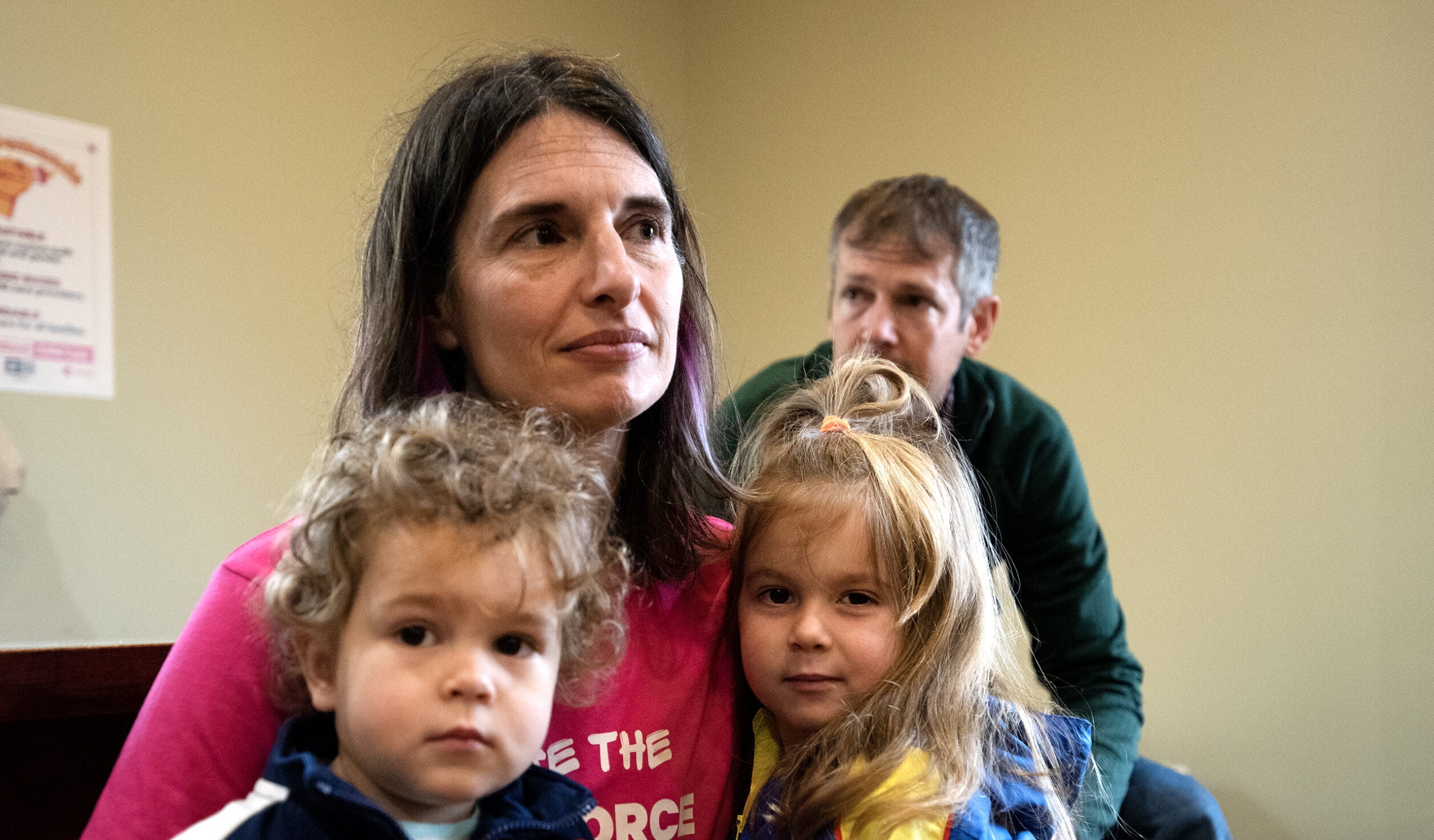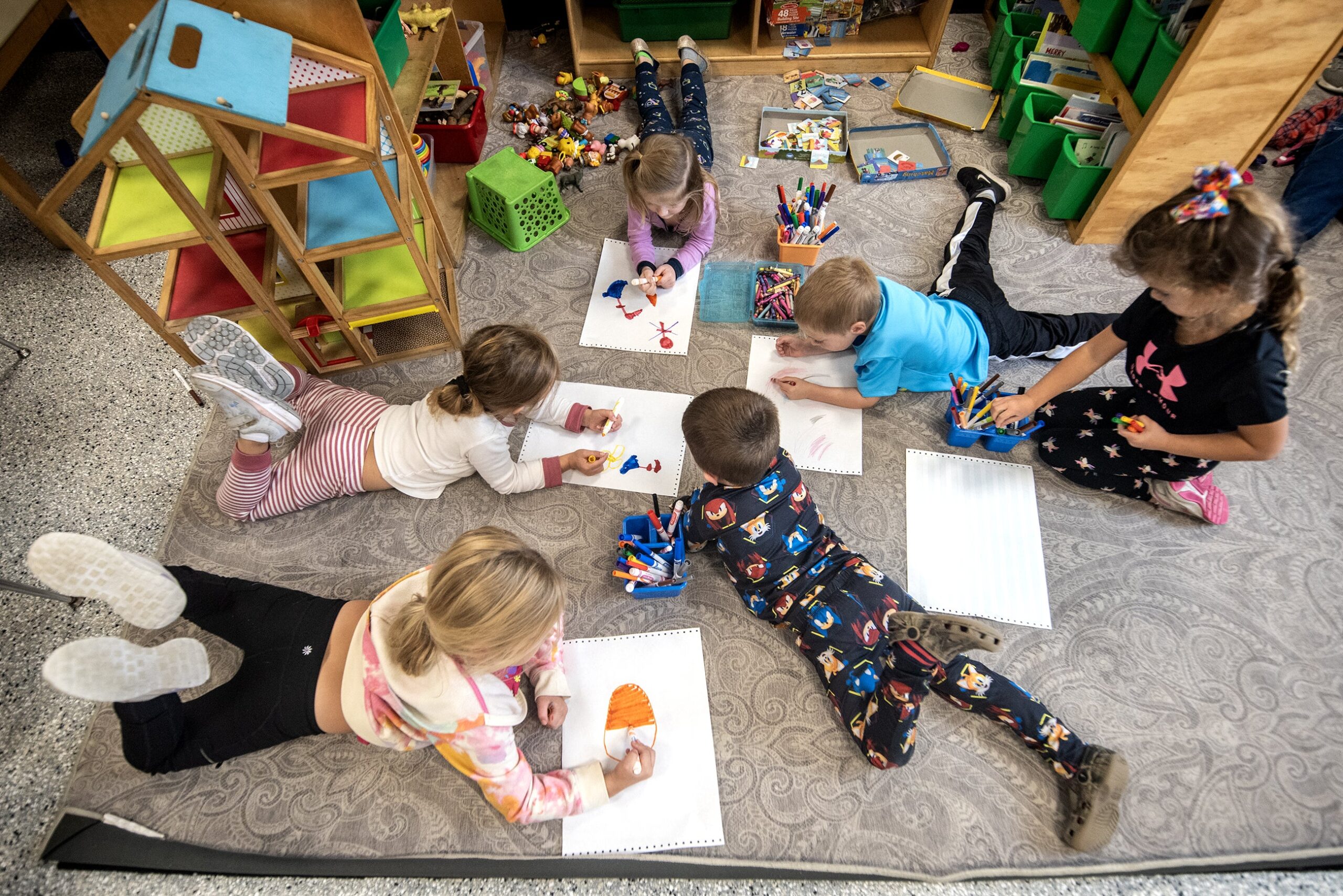The COVID-19 pandemic brought an influx of funding to the nation’s child care centers. But those child care stabilization grants will soon be a thing of that past.
This has some worried that the child care industry — already struggling with worker shortages, low wages and long waitlists — is on the brink of collapse.
The National Association for the Education of Young Children surveyed more than 12,000 early childhood educators from across the country in October 2022. The results show that relief helped many centers stay afloat during the pandemic, with one-third of respondents saying their program would have closed without funding.
Stay informed on the latest news
Sign up for WPR’s email newsletter.
Now, as relief comes to an end, many of those surveyed say the future looks bleak.
Nationally, 43 percent of child care center directors and 37 percent of family child care providers said they’d have to raise tuition when the grants end, according to survey results. Nearly a quarter of centers said their programs would lose staff and 27 percent of centers said they’d have to cut teacher wages.
Lauren Hogan is the managing director for the National Association for the Education of Young Children. She said there’s a “deep sense of fear” about what will happen when the funding is gone.
“Nobody wants to make these choices. They don’t want to raise tuition on families who they know can’t afford it. They don’t want to cut wages for educators who they also know can’t afford it. But the structure doesn’t work, the market doesn’t work,” she said.
In Wisconsin, the numbers are worse.
Upwards of 60 percent of child care center directors in the state who responded to the survey said they would have to raise tuition. Thirty-four percent said they would have to cut wages or end salary increases for early childhood educators.
Ruth Schmidt, executive director of the Wisconsin Early Childhood Association, said funding for child care needs to come from somewhere. With federal funding ending, some centers may be forced to increase rates, or cut wages — but that has its own drawbacks, she said.
“This industry is the workforce behind Wisconsin’s workforce,” Schmidt said. “Without a child care workforce, working parents with young children have a really hard time securing care, having their children in high quality, affordable, accessible options and (that) impacts the overall workforce of Wisconsin in really deep ways.”
Child care in Wisconsin is already expensive, ranking 20th among states and the District of Columbia for most expensive infant care. The average annual cost of child care was nearly $12,600 in October 2020, according to the Economic Policy Institute.
And child care workers already make less than a living wage. As of May 2021, the most recent data available from the U.S. Bureau of Labor Statistics, child care workers in the United States made $13.31 per hour, or a mean annual wage of $27,680.
Low wages have led to worker shortages, forcing centers to operate well-below capacity according to the association’s survey. In Wisconsin, half of centers are serving fewer children than they’d like to because of staffing issues. At the same time, 51.5 percent of centers are reporting longer wait lists than ever before.
“We have heard story after story from child care programs who have said that they have much larger waitlist than historically,” Schmidt said. “And I think it’s simply a function of how many classrooms are closed in Wisconsin due to the staffing shortage.”
In all, more than 200,000 child care providers received COVID-19 relief funds — impacting as many as 9.5 million children. Stabilization grants have to be spent by September 2023, and additional American Rescue Plan child care funds can be spent through 2024.
Now, advocates are calling on Congress to revisit failed attempts to invest long term in child care and early learning.
“This is one of the areas that sees a ton of support across the lines that sometimes divide us: geographic, political, demographic, like everybody can come together around the importance of child care and early learning.” Hogan said. “It just takes choosing to prioritize the investments at the end of this year, into next year, to really continue to make progress towards a child care system that works for families, for educators and … the economy at large.”
At the state level, a group of child care advocates, including the Wisconsin Early Childhood Association, are preparing to ask Gov. Tony Evers to invest in child care funding in his next budget.
Schmidt said the budget request, if funded, would create ongoing state funding for Child Care Counts, the Wisconsin Department of Children and Families division that doled out and managed Wisconsin’s COVID-19 child care stabilization grants.
“We’re going to be calling on the governor to do a $300 million investment and Child Care Counts to avoid this enormous fiscal cliff it’s going to happen when these federal COVID relief dollars end, which for Wisconsin is January of 2024,” Schmidt said.
After receiving bipartisan support and approval from the legislature’s powerful budget committee, Schmidt is hopeful that some stream of revenue for child care will make it into the next budget.
Wisconsin Public Radio, © Copyright 2025, Board of Regents of the University of Wisconsin System and Wisconsin Educational Communications Board.
